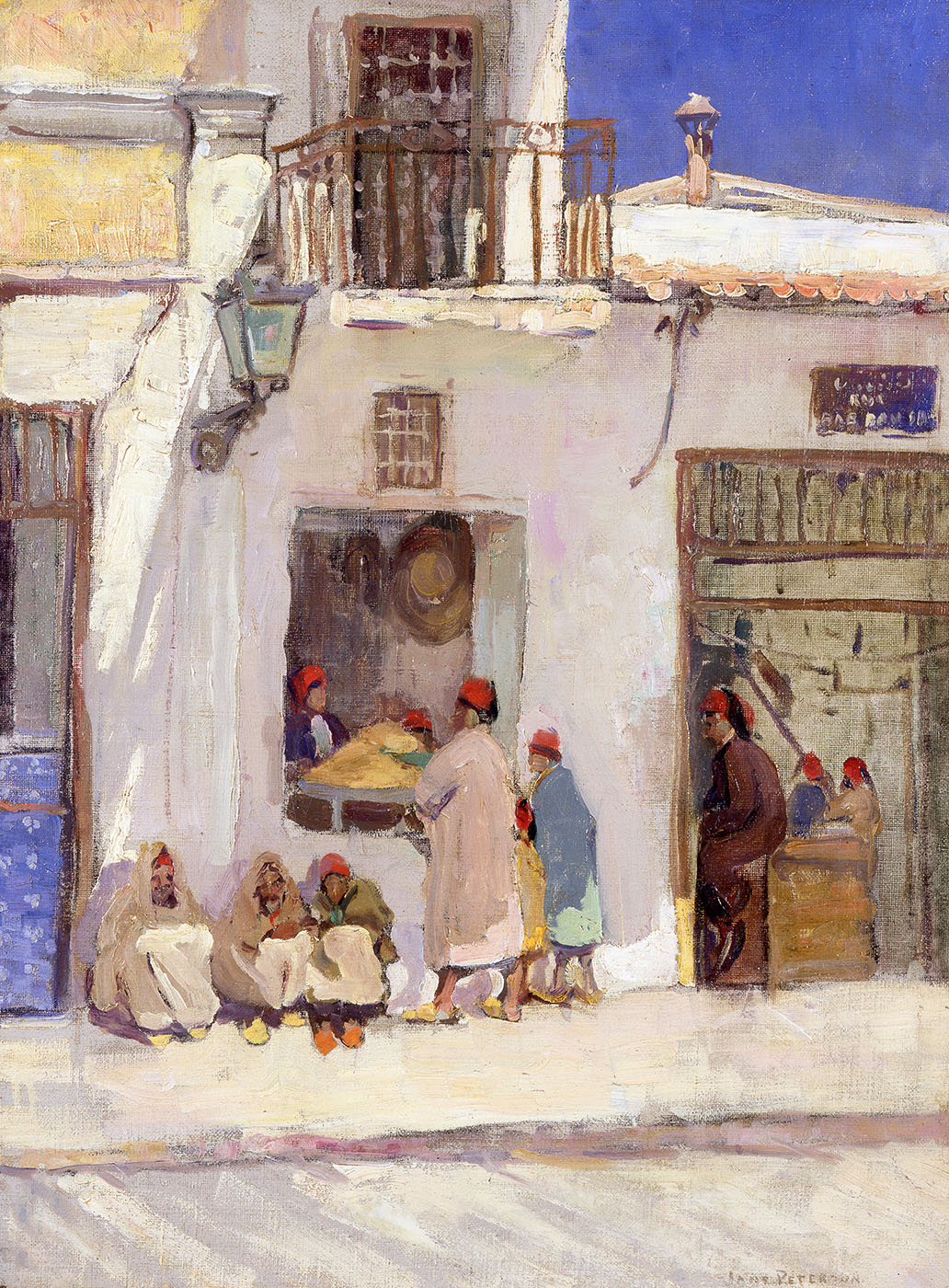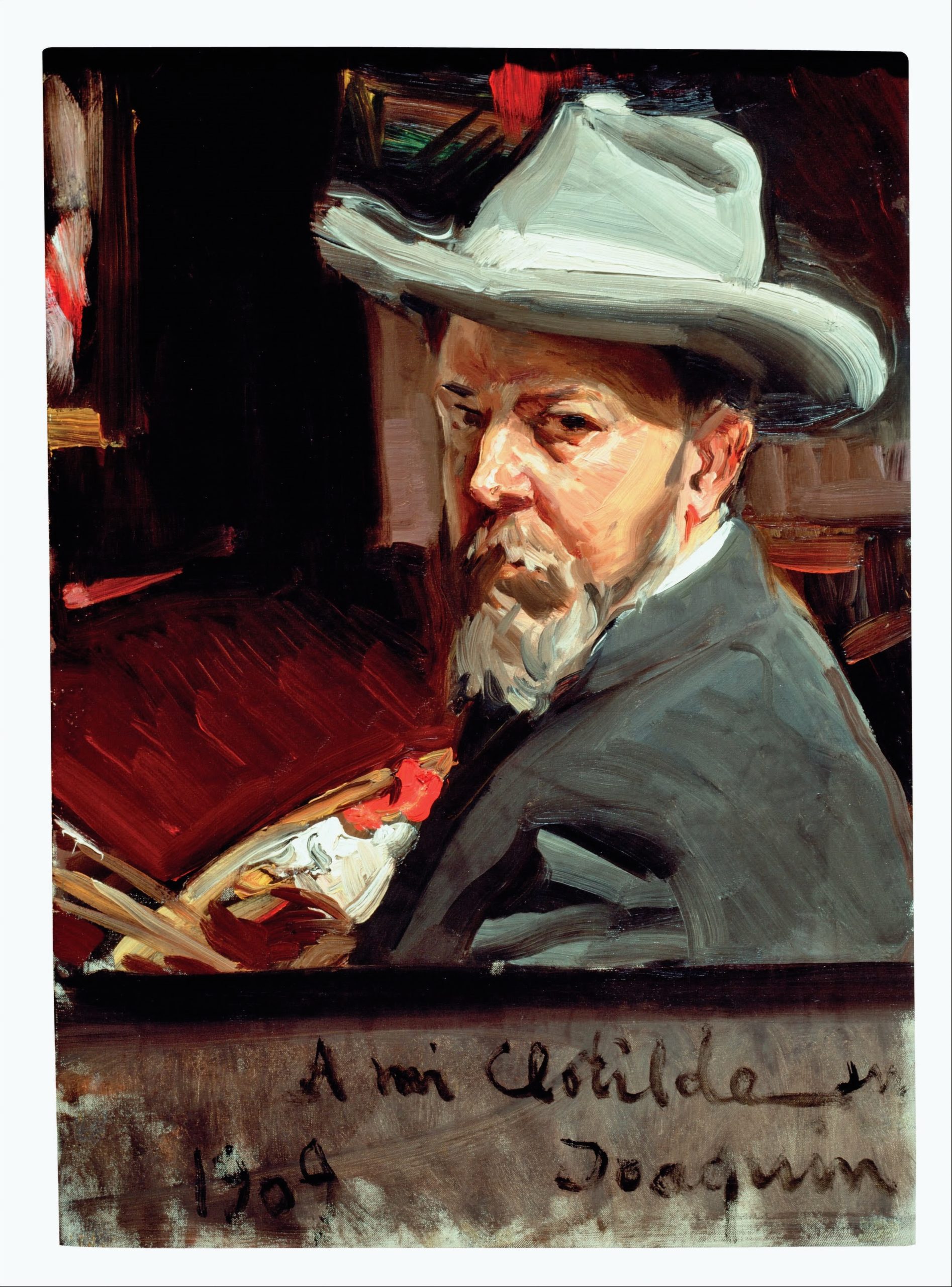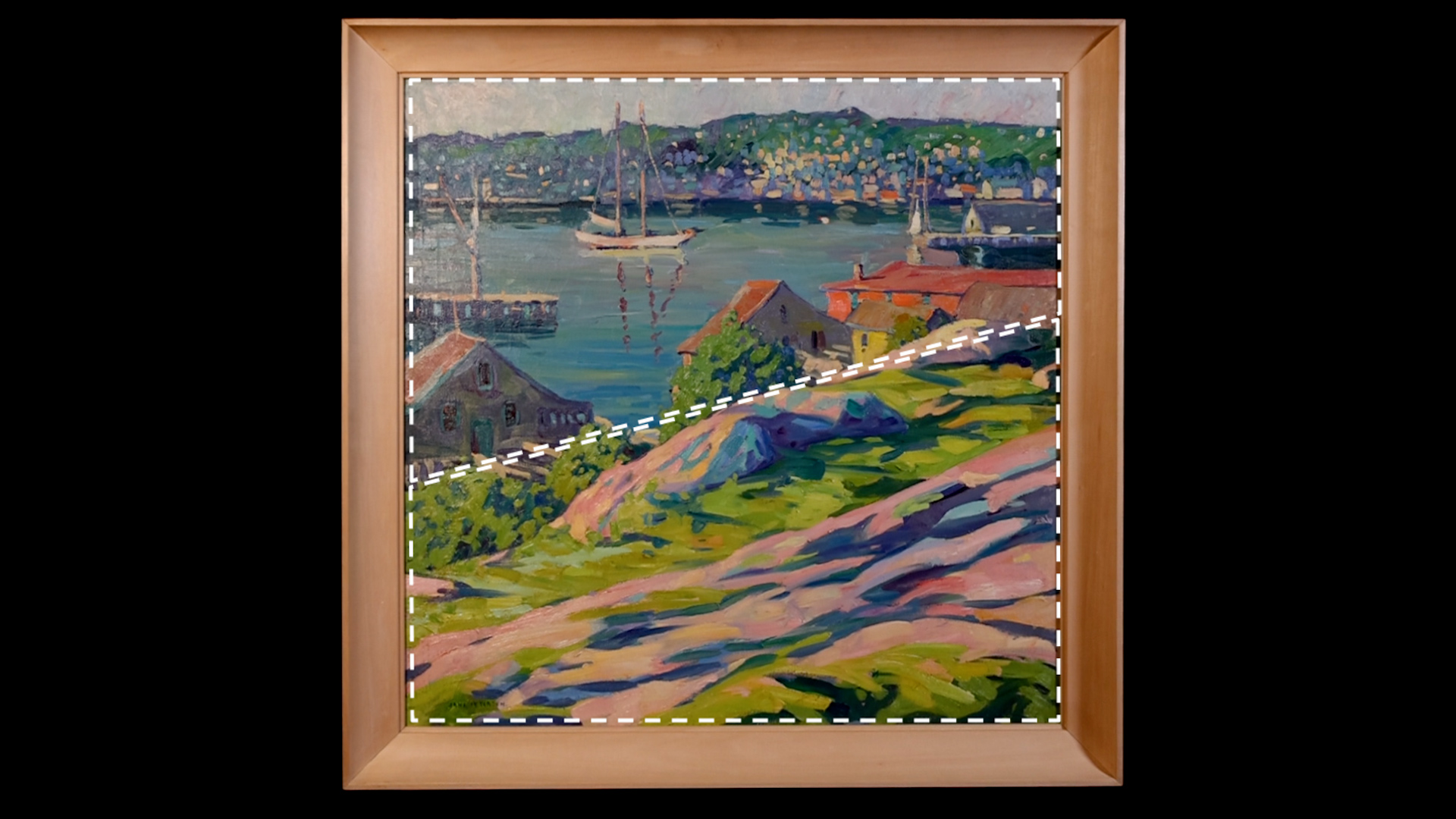
A symphony of bold, brilliant hues dances and dazzles through the quick but sure brushstrokes of this work. The pastoral scene simultaneously seems to bubble over with fervent energy and placate the viewer with its tranquil peace. That balance is a delicate one that has been carefully and uniquely orchestrated.
Daydreaming
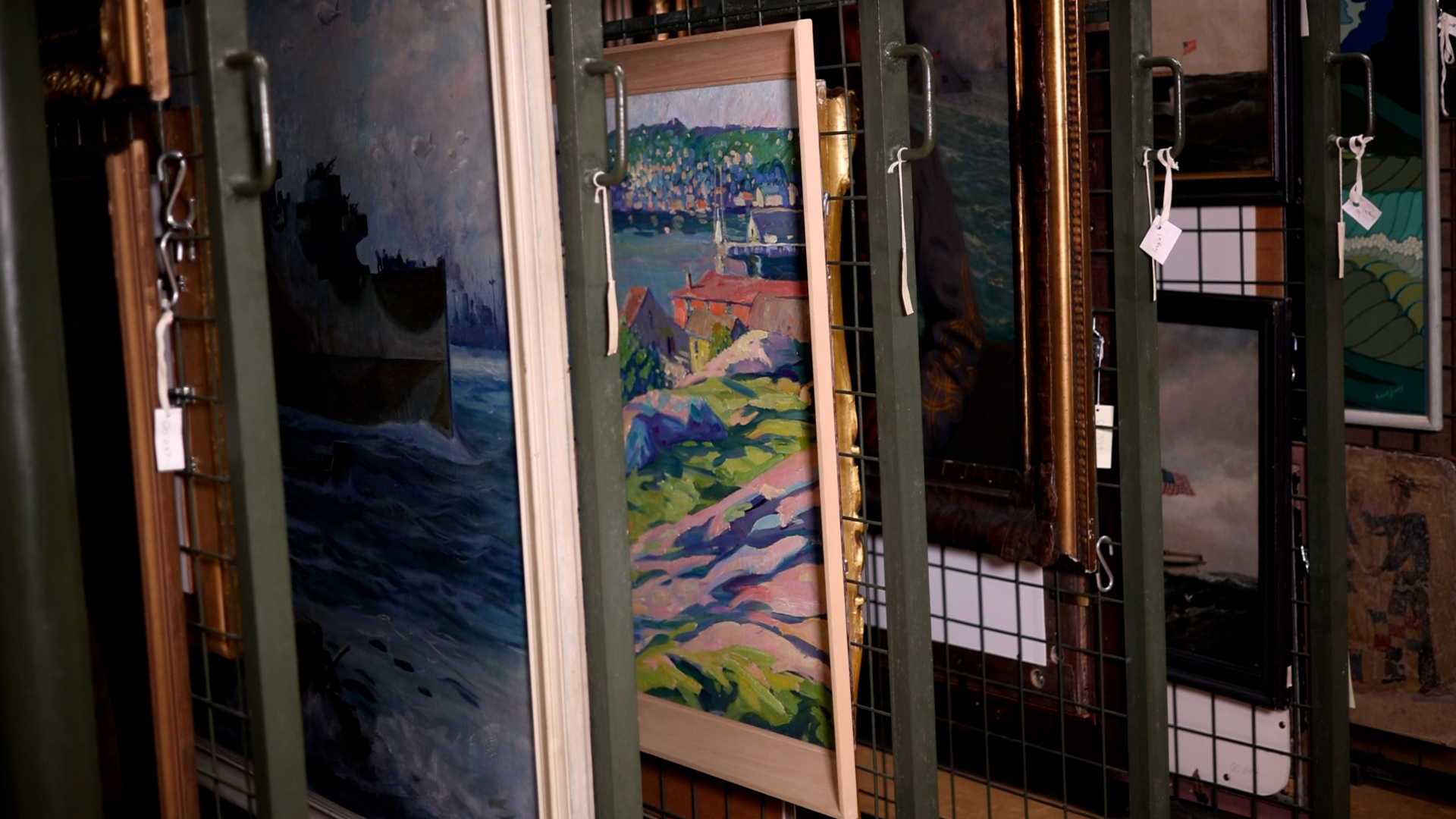
A square painting filled to bursting with spectacular color and energy hangs on a rack in painting storage. Every time I pass this rack, it catches my eye and I say to myself “I need to wait on this one”. But these pieces have a special way of working themselves into my head and so on a gloomy late winter day I decided it was time.
I found myself daydreaming about sitting on this grassy, rocky hillside looking out over the water of the harbor, watching the sailboat in the distance bobbing and rocking in the gentle tide.

I hear the delicate whistle of the wind as it whirls between the houses, bringing the coolness of the water along with it. Birds sing as they soar above the water, the boats, the houses, and this hillside. I yearn to sit a while longer in this painted paradise.
Different, in a Good Way
One of the first things that struck me about this work, apart from the color, is that this canvas is square. It’s something that seems silly and simple, but many works that we’re used to seeing are rectangular – and maritime works in particular are often landscape-oriented. This felt intentional, though I wasn’t sure why. But the more time I’ve spent gazing at this work, the more it seems to make sense.
You see, it’s unique. Not out of place, just notedly different – just like Jane. Jane Peterson was an artist who was remarkably one-of-a-kind, something that is reflected in the style of each of her paintings.
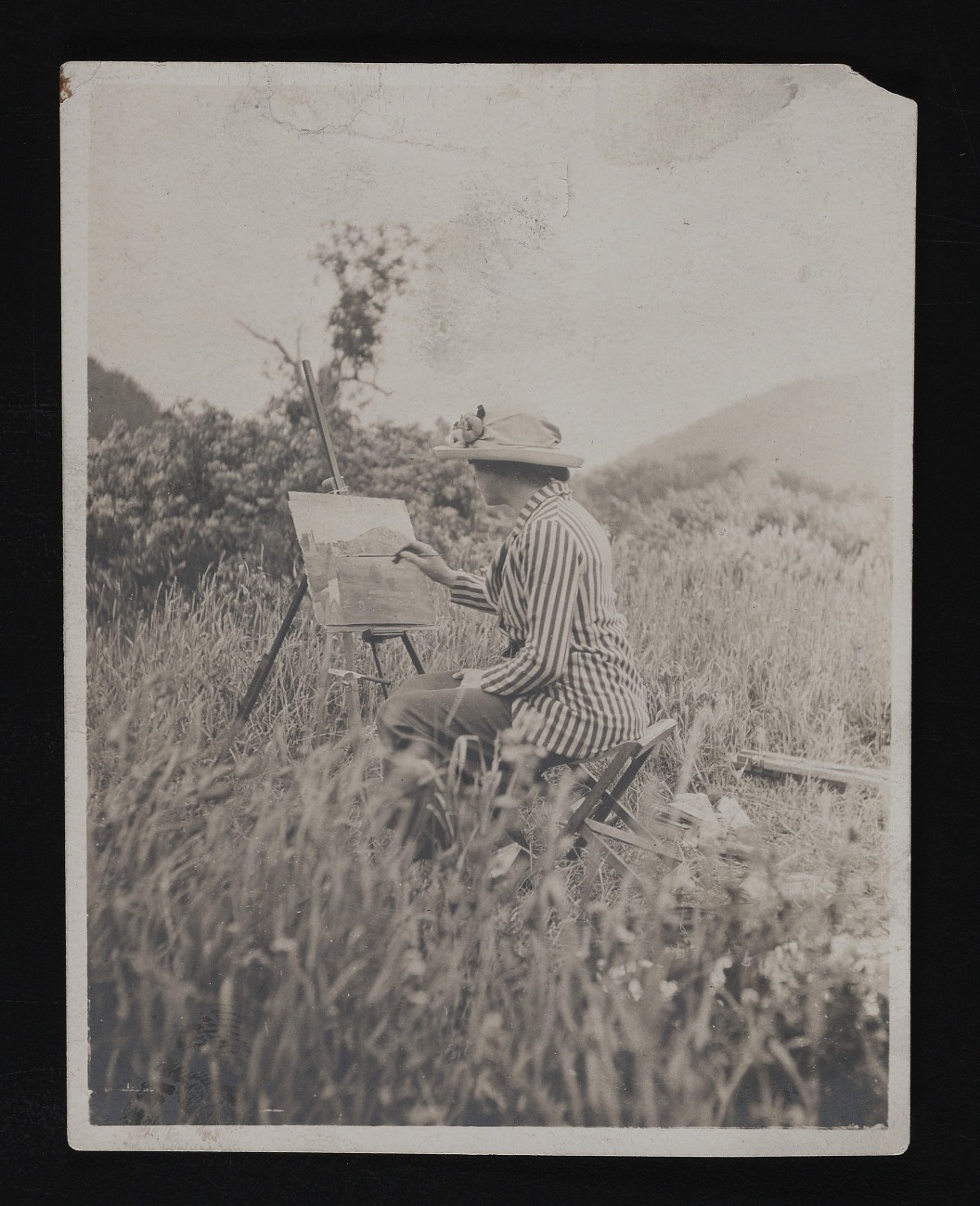
Born Jennie Christine Peterson in 1876, she began her life differently from many other female artists of her time. She came from a modest Midwest family and her introduction to art came from her public school education. Her talent drew attention and from there her art career began, later teaching drawing in a public school before an astronomical rise to fame.
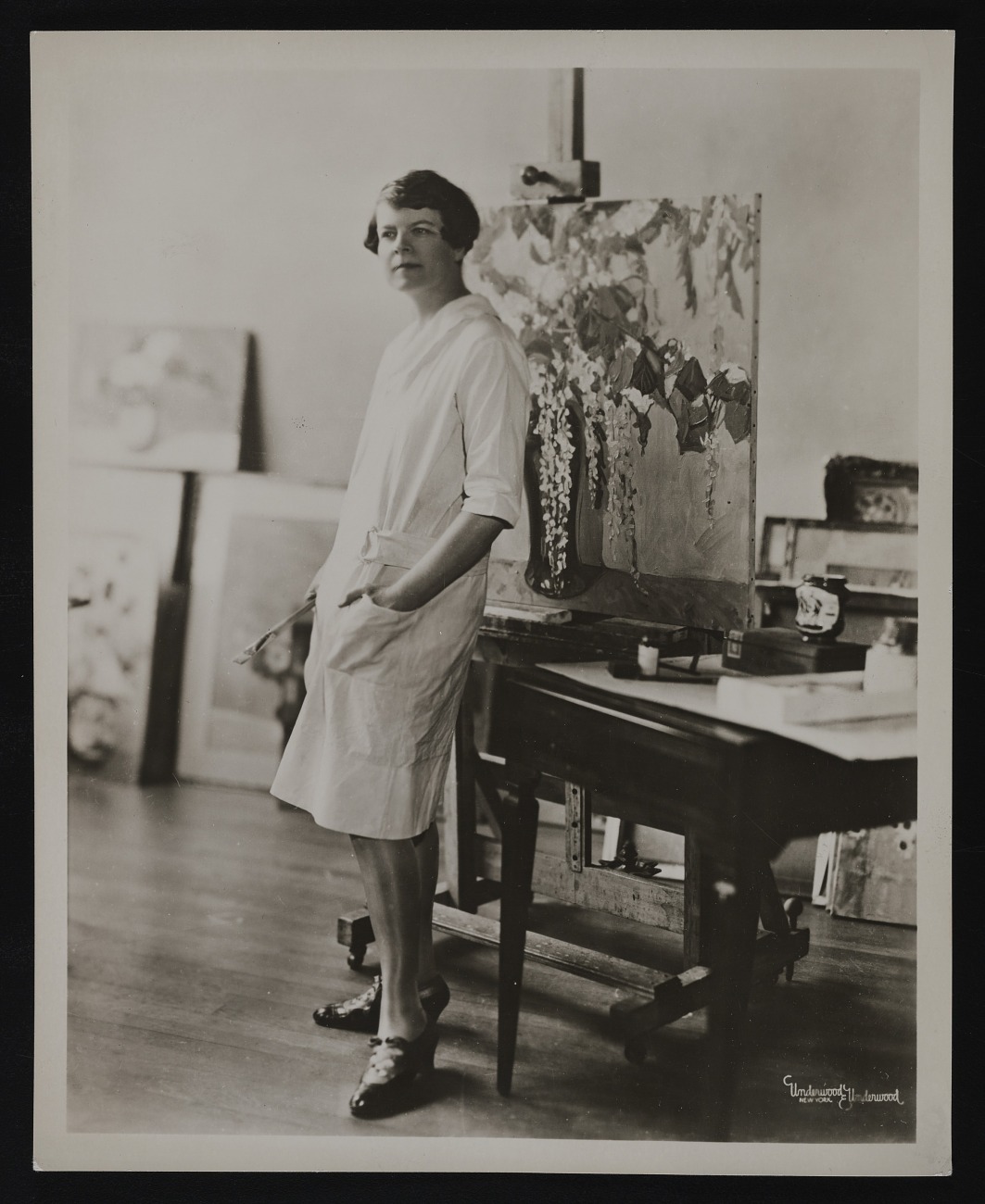
She began cutting her own path – a unique and brave one, challenging the norms and stigmas of a male-dominated field, proving that she – she was different. As she began making her way, Peterson started traveling avidly and independently, through Europe, even to Northern Africa and Turkey finding new friends and travel companions wherever she went.
A Meaningful Mentor
During her travels, she worked with many other artists, though none more notable than Joaquin Sorolla, Spain’s infamous impressionist painter. She studied with him for a while and he pushed her and helped her advance her techniques. But the thing about Jane is that she never simply let people change her.
She allowed her life experiences and the influences of other artists to inform modifications in her style, but only those she felt were necessary to help lead her towards her truest self. From Sorolla, she adopted a rigorous painting practice and learned to be sure of her brushstrokes. Further fostering a confidence not only in her work, but in herself.
A Bright Outlook
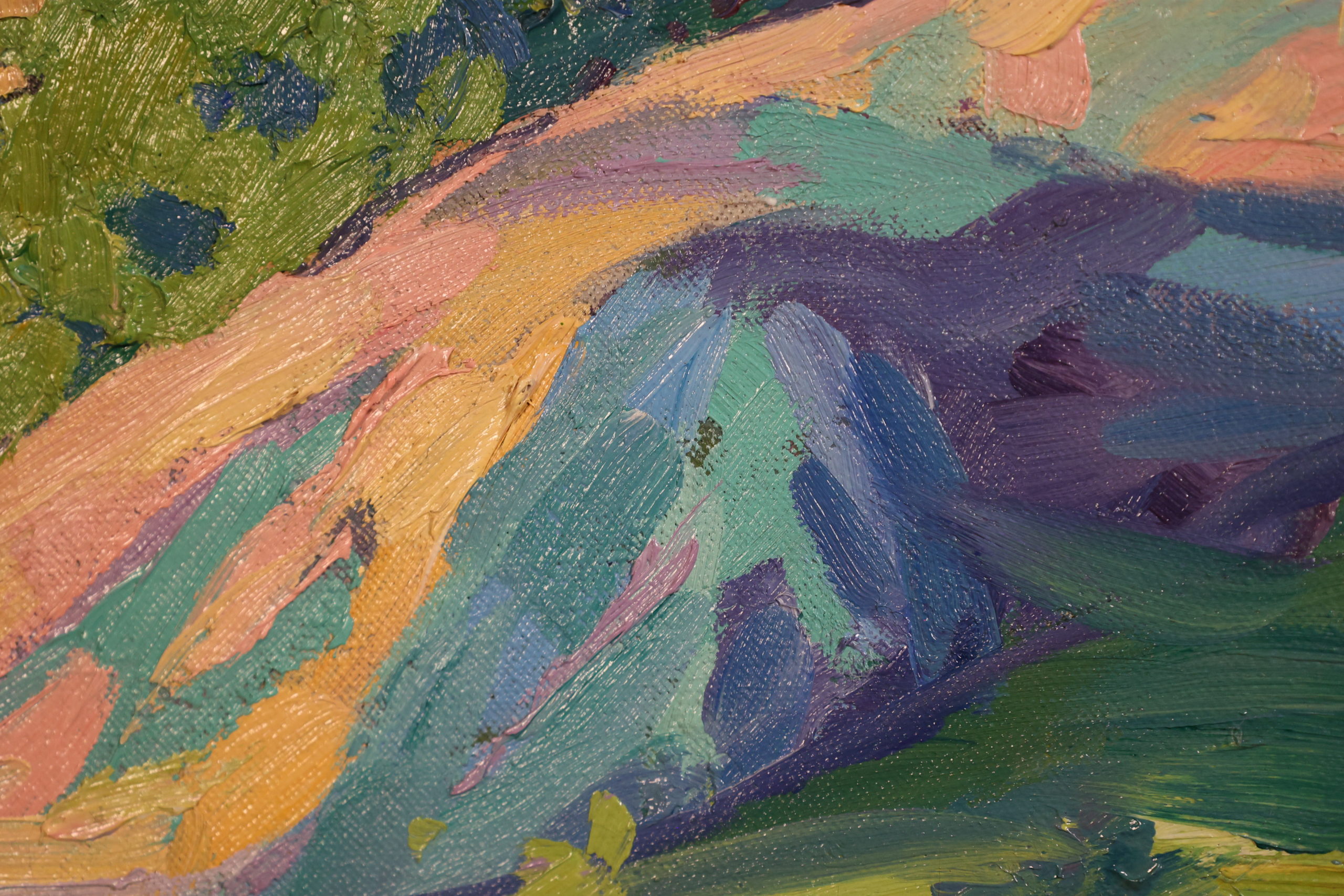
She was obsessively drawn to the joy of life and would only paint the good, the beautiful. While some might think that ignorant, it can also be seen as optimistic and hopeful. That optimism is reflected in the blazing bright colors which are a whirlwind of wonder that break up the monotony of everyday. They catch the eye and remind us of the joy and the beauty if only we take a moment to let ourselves see it.
Finding Balance
She utilizes an uncommon diagonal symmetry to structure this work, its measured but simultaneously seemingly effortless – another aspect of her style which differentiates her. But beyond that, the symmetry of this square canvas – water and sky mirrored with the earth of the hill at our feet – reminds us to find balance, not just within this work, but also to find stillness and peace amidst the energy of the ever-changing world. This hill provides for us a moment of rest to reflect on that balance.
She takes that balanced, yet optimistic energy within her and uses it to shed a brilliant light on the world through her paintings.
Jane, like this work, shows us that the beauty we can share with the world comes, not from conforming, but from finding our truth, standing out, and by being our uniquely authentic selves.

Be sure to watch the full episode here and stay tuned for new episodes the first Friday of each month!
